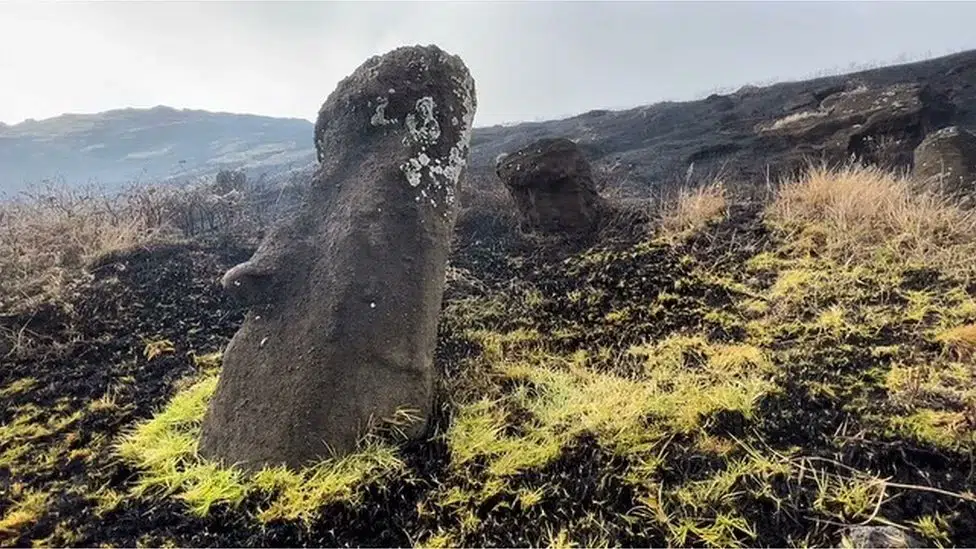
A wildfire on Easter Island severely damaged some of its notable stone-carved statues, officials said in a statement on Wednesday.
After spreading across more than one hundred hectares (247 acres) surrounding the Rano Raraku volcano, a UNESCO world heritage site, the fire, which is being regarded as arson, “totally charred” a number of the notable moai statues.
The national park posted a statement to its official Facebook page that “more than one hundred hectares (247 acres) were affected in the Rano Raraku sector which includes the wetland and moai sector.”
The island, which is 2,175 miles (3,500 kilometers) off the western coast of Chile, had been razed by flames since Monday, said Carolina Perez, Chile’s Undersecretary for Cultural Preservation.
There are more than a thousand stone statues in Rapa Nui, including enormous heads that are said to have been carved by the island’s ancient occupants as early as the thirteenth century. According to reports, the region closest to the Rano Raraku volcano, a UNESCO World Heritage Site, was the worst hit.
An estimated several hundred moai are in that area, as well as in the quarry where the stone used to carve the sculptures is extracted.
The Ma’u Henua community’s director for management and upkeep of the park, Ariki Tepano, called the damage “irreparable.”
He said, “The moai are totally charred and you can see the effect of the fire upon them.”

Island Mayor Says Damage of Fire Can’t Be Undone
Pedro Edmunds, the mayor of the island, said to local media that “the damage caused by the fire can’t be undone.”
In recent years, archaeologists discovered that the giant heads had bodies that were buried underground.
The figures, which are arranged in the form of a ring around the island and face inland, were carved by the local Rapa Nui people sometime between 1400 and 1650.
They served as spiritual idols for the Rapa Nui and embodied the spirit of a revered ancestor. They were all considered to be the person’s present-day physical manifestation.
Each moai varies greatly in size with some reaching heights of thirty-three feet (ten meters) while the average is just thirteen feet (four meters).
After being closed off to visitors for two years due to COVID-19, the island was reopened to tourism on August 5th, barely three months ago. Easter Island, where tourism is the principal economy, saw about 160,000 tourists a year before the pandemic.
Polynesians lived on the island long before Chile conquered it in 1888. The monuments, which previously served as a focal point for communities and were connected to ritual activities, are believed to depict the living ancestors of Easter Island’s Polynesian inhabitants.
See all the latest news from Greece and the world at Greekreporter.com. Contact our newsroom to report an update or send your story, photos and videos. Follow GR on Google News and subscribe here to our daily email!



